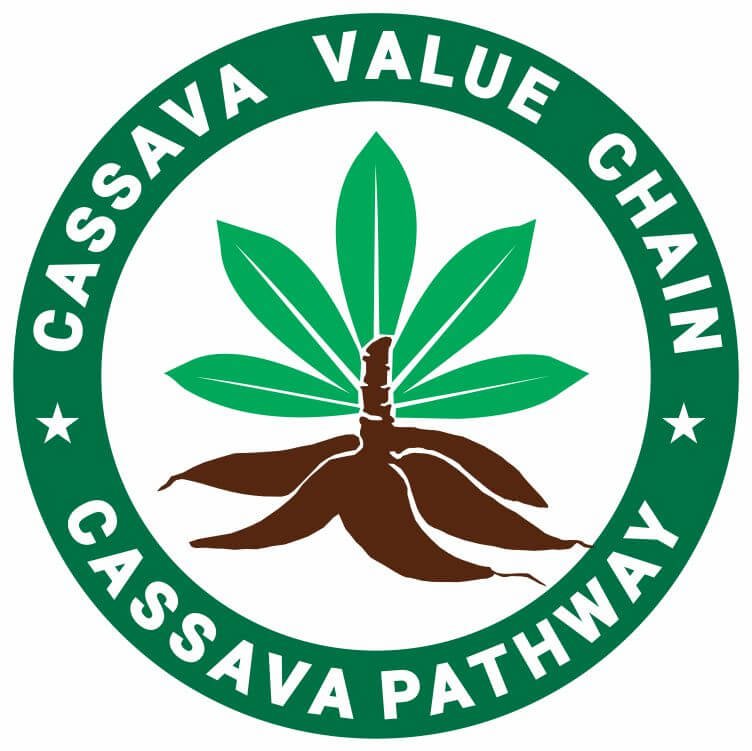When growing cassava, achieving the standard intra-row and inter-row spacing for cassava is essential to maximize yield and ensure the healthy development of the crop.
Proper standard tntra-row and inter-row spacing for cassava provides sufficient room for cassava root expansion, enhances airflow, and optimizes sunlight exposure critical factors for a successful harvest.
While the general guideline recommends 1 meter between plants and rows, it’s important to adjust based on conditions like soil fertility, climate, and the specific variety of cassava.
This article will discuss the standard spacing recommendations, explain how various factors influence spacing decisions, and offer insight into how proper planting arrangement contributes to a more resilient, productive cassava crop.
Table of Contents
- Standard Intra-Row Spacing Recommendations for Cassava
- Standard Inter-Row Spacing Guidelines
- How Much Cassava Stem Cuttings are Needed for a Hectare of Land?
- How Much Cassava Stem Cuttings Are Needed for an Acre of Land?
- Factors Influencing Intra-Row and Inter-Row Spacing for Cassava
- Conclusion
Standard Intra-Row Spacing Recommendations for Cassava
For cassava, the ideal standard intra-row and inter-row spacing for cassava is typically around 1 meter apart.
This distance promotes healthy root development and reduces competition for vital resources like water, nutrients, and sunlight.
However, these measurements can be adjusted based on specific factors such as soil fertility and environmental conditions.
In fertile soils, where nutrients are abundant, closer spacing might work without compromising plant health.
On the other hand, in nutrient-poor soils, increasing the space between plants can help each one access enough nutrients, supporting robust growth and preventing stress.
Environmental conditions, including rainfall patterns and temperature, also affect how plants should be spaced.
In areas with high humidity or frequent rainfall, wider spacing allows for better airflow, reducing the likelihood of fungal diseases.
Conversely, in dry regions, plants may need closer spacing to optimize water usage and ensure they get enough moisture from the soil.
Farmers should actively observe their cassava fields and adjust plant spacing as needed, depending on soil fertility, weather conditions, and plant health.
This flexibility allows for better management of plant growth and, ultimately, enhanced yield potential.
Related Posts
What is the Cassava Value Chain?
What is the Best Time to Plant Cassava?
What Crops Can Be Intercropped with Cassava?
What are the Soil Requirements for Cassava?
Standard Inter-Row Spacing Guidelines
Inter-row spacing for cassava is also recommended to be 1 meter by 1m (1m x 1m).
This spacing allows enough room for individual plants to flourish, contributing to improved sunlight exposure and better air circulation.
These factors are critical for plant growth, as proper light supports photosynthesis and healthy tuber production, while good airflow reduces the risk of diseases and pests.
The 1-meter row spacing also helps with maintenance activities, such as weeding, disease monitoring, and harvesting.
Whether using manual labor or machinery, this spacing ensures ease of access and efficient management of the field.
Moreover, ensuring adequate row spacing can deter the spread of pests and minimize the need for pesticides.
By preventing the plants from growing too close together, it becomes easier to manage any outbreaks of disease and reduce the impact of pests.
Ultimately, maintaining the standard row spacing guideline will not only promote plant health but will also lead to better yields and higher-quality cassava tubers, making it a crucial practice for successful cultivation.
How Much Cassava Stem Cuttings are Needed for a Hectare of Land?
To plant cassava on one hectare of land with a 1-meter by 1-meter spacing, you would need approximately 10,000 cuttings.
This is because one hectare equals 10,000 square meters, and with 1 meter between each plant in both rows and columns, you can fit 10,000 plants per hectare (10,000 ÷ 1 = 10,000).
Each cassava cutting is planted at a 1-meter interval, meaning one cutting is required for each plant.
Therefore, for optimal growth and spacing, you would need about 10,000 cassava cuttings to cover a hectare of land.
How Much Cassava Stem Cuttings Are Needed for an Acre of Land?
To plant cassava on one acre of land with a 1-meter by 1-meter spacing, you would need approximately 4,840 cuttings.
One acre is equal to 4,840 square meters, and with 1 meter between each plant, you can fit 4,840 plants per acre (4,840 ÷ 1 = 4,840).
Thus, you would need around 4,840 cassava stem cuttings to cover an acre of land with the recommended spacing for optimal growth and yield.
Factors Influencing Intra-Row and Inter-Row Spacing for Cassava
Several factors play a role in determining the ideal plant and row spacing for cassava.
- One of the most significant is soil fertility. Fertile soils can support closer spacing, as they offer abundant nutrients to the plants. In less fertile soils, wider spacing can help ensure that each plant has access to sufficient nutrients, improving its growth and overall health.
- The specific variety of cassava being cultivated also affects spacing decisions. Some varieties have more vigorous growth and larger leaves, which benefit from closer spacing to maximize photosynthesis. On the other hand, varieties that produce larger tubers may require more space to allow their roots to develop properly.
- Local climate conditions, such as rainfall, temperature, and humidity, further influence the best plant and row spacing. In regions with high rainfall, too-close spacing can lead to waterlogged soils, while wider spacing can help reduce this risk.
- Similarly, the amount of sunlight each area receives can impact how closely plants should be spaced. Adjusting for local conditions ensures better plant growth and overall productivity.
Conclusion
Proper intra-row and inter-row spacing for cassava is important for maximizing cassava yields and ensuring healthy growth.
By maintaining around 1 meter between plants and rows, growers can improve root development, airflow, and sunlight exposure, all vital for a successful harvest.
However, it’s essential to adapt spacing based on factors like soil fertility, climate, and cassava variety.
With thoughtful adjustments, farmers can achieve optimal plant health, better yields, and more resilient crops.
References:
- http://www.scielo.org.co/scielo.php?script=sci_arttext&pid=S0120-01352022000100042
- Cassava system cropping guide

Chimeremeze Emeh is a writer and researcher passionate about Africa’s most transformative root crop—cassava. Through his work at cassavavaluechain.com, he explores the entire cassava industry, from cultivation and processing to its diverse applications in food, health, and industrial use.
He also writes for palmoilpalm.com, where he shares his extensive experience and deep-rooted knowledge of palm oil, covering red palm oil, palm kernel oil, and refined products. His work there reflects his lifelong connection to agriculture and his commitment to promoting sustainable value chains in Africa.
Driven by curiosity and purpose, Chimeremeze aims to shed light on how cassava continues to empower communities, strengthen food systems, and link traditional farming wisdom with modern innovation.

